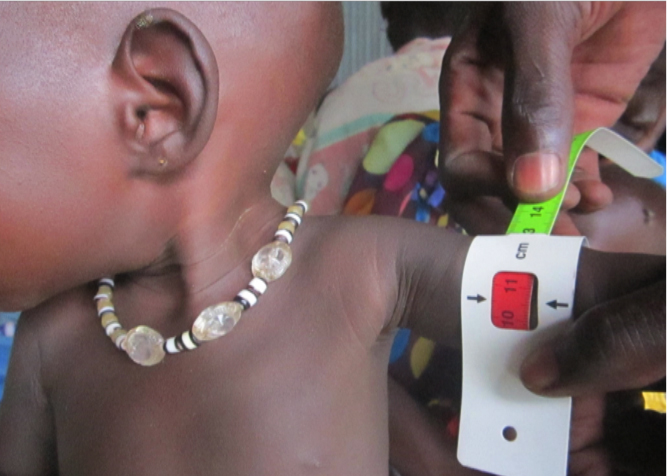M
ary Akuol was born close to the front lines of conflict in South Sudan’s Jonglei State. The state’s northern areas, including Mary’s home region of Pigi County, are among those most affected by the ongoing conflict that began in December 2013. Thousands have lost their homes and sources of income, and most don’t have access to clean water or basic health care.
When Mary was 11 months old, a health worker at Kurwai Health Center noticed Mary’s troubling symptoms and urged her mother to take her to seek treatment. A mid-upper arm circumference (MUAC) measurement less than 11 centimeters indicates severe acute malnutrition; Mary’s MUAC was 10.5 cm. She was in serious danger.
The Kurwai Health Center, managed by IMA World Health and a local organization called Nile Hope, is part of a targeted nutrition outreach effort funded by the United States Agency for International Development (USAID) Office of Foreign Disaster Assistance (OFDA) to target those suffering from severe or moderate acute malnutrition in key conflict-affected areas.
Mary was entered into an intensive therapeutic treatment program, during which she ate ready-to-use therapeutic food (RUTF) and was monitored by the nutrition center staff. After six weeks, she had improved dramatically—achieving a 15% weight gain—and was discharged from the program a healthy one-year-old.

Mary’s mother Nyanthiok Deng thanked the nutrition program for the timely intervention for her daughter and their effort in curbing the overall rate of malnutrition in Pigi County. She said that, through the program’s nutrition education sessions, she had gained very useful knowledge about how to provide an adequate and balanced diet for her children, which she will put into practice. She also said she will actively share that knowledge with other community members, as she had seen the benefits first hand.
She commented, “This program should not stop, since we do have other children in the community that require these services.”
To date, IMA and Nile Hope have surpassed nearly all targets for the project. For example, the goal of treating 324 children under age 5 for severe acute malnutrition resulted in 516 children receiving treatment, exceeding the target by 60%. Additionally, by educating mothers, the project hoped that 230 children would be exclusively breastfed; to date, that number is 669—exceeding the target by 190%.
Though much work remains, IMA and Nile Hope are pleased with Mary’s progress and the overall success of the nutrition project.

